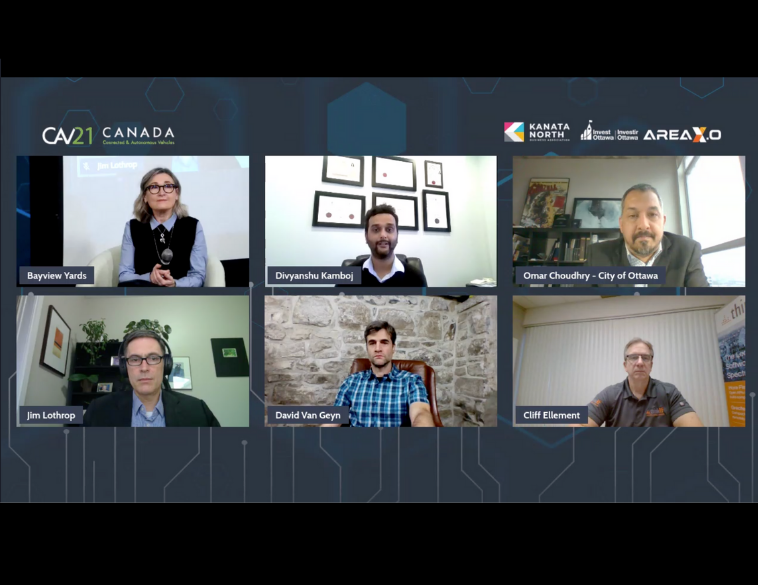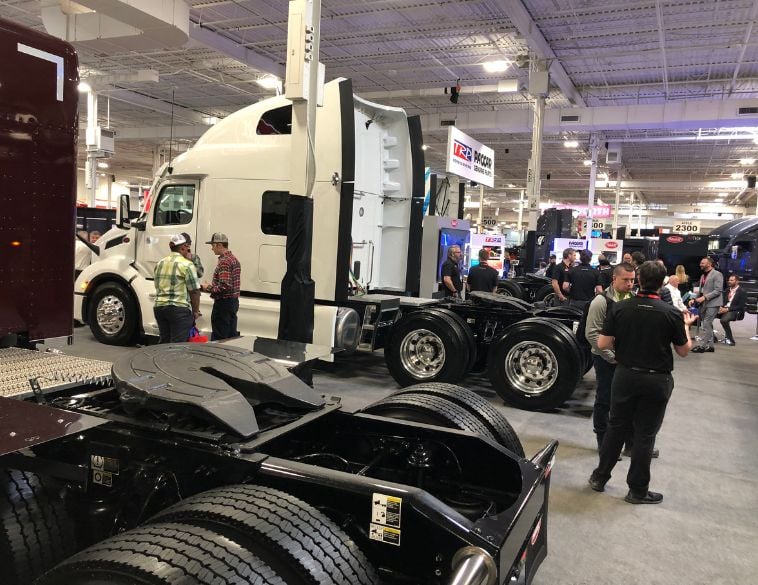As part of CAV Canada, a panel discussion on Ottawa’s infrastructure development around autonomous vehicles delivered some interesting observations.
In December, Connected & Autonomous Vehicles (CAV) Canada hosted a hybrid event on the future of mobility in this country. Topics covered the gamut from AI technology, to electric vehicle innovation, autonomous vehicle adoption, cyber security and smart infrastructure development.
The latter subject proved particularly intriguing and assembled a roster of international experts, scientists and professionals. These included Omar Choudhry, Project Lead, Traffic Systems Management, City of Ottawa, Susanne Cork, Business Development Director at Area X.O.; Cliff Ellement, Head of AI Solutions, Think RF; Jim Lothrop, Director General, Transport Canada and David Van Geyn, Open Autonomy Engineering Manager, AutonomouStuff. Additionally, Divyanshu Kamboj, Technology & Testing Director, Area X.O., served as moderator for the panel discussion.
Vehicles, pedestrians and road use
A key aspect of the push towards autonomous vehicle technology is maximizing both occupant and pedestrian safety as well as efficiency of road use. This includes not only the ability to reduce and minimize traffic congestion for regular citizens, but also ensure that transit schedules are met, and emergency responders are able to reach those in need as quickly and as safely as possible.
Safety and road efficiency are two key elements of the City of Ottawa’s Safe, Smart, Intersections Project.
Currently, Ottawa has approximately 1,200 signal lined traffic intersections where traffic flow and safety is monitored. And as technology continues to advance, traffic and pedestrian behaviour at these intersections can allow research to help fuel solutions to improve the safety of the most vulnerable road users.
By tracking the movement of these road users through intersections, the Safe, Smart, Intersections Project, can relay this data and collaborate with Transport Canada to further improve road safety. Additionally, the project is also seeing the deployment of a secure credential management system—essentially an SMS that enables the vehicle to engage with the roadside infrastructure to ensure that the information shared is both encrypted and secure. And, as machine learning and wireless technology continues to evolve, the aim is to make this even more integrated.
Overall, this represents a very ambitious and potentially game-changing project, so it was very interesting to hear the panelists provide some more in-depth information.
Complex test scenarios
Divyanshu Kamboj said that this project represents an exciting development for Area X.O., as it works with key partners on the project to develop complex test scenarios, develop autonomous frameworks based around them with the ultimate goal of commercializing this technology for real-world use.
Regarding the autonomous vehicle aspect of a project such as this, David Van Geyn noted that a key part is creating new software modules and drivers that allow the vehicle to interface with the infrastructure around it, so the computers in the vehicle are able to communicate effectively with roadside units. By conducting testing hardware with different software stacks, the idea is to create value and benefits for customers and partners of these frameworks as well as communities at large.
Some of the potential scenarios that could be realized from this research include the ability for roadside sensors to transmit information to an approaching vehicle when they see a pedestrian walking in front of a parked car. As that data is transmitted to the approaching vehicle, it allows that vehicle to take evasive action to prevent a collision with the pedestrian. Yet because each individual situation is unique and there are other factors to consider such as different surfaces and weather conditions, achieving these connectivity objectives requires a considerable amount of time and resources.
ThinkRF is seen as having a key role to play in helping further the development of autonomous vehicle and infrastructure technology here in Canada. The company, which develops and builds spectrum monitoring equipment and software, operates in a variety of market segments including wireless providers, regulatory agencies and security companies. Cliff Ellement noted that as the CAV and V2X sector grows, so does the need for wireless communication in deploying the critical infrastructure required to make it all work.
Different settings, constant monitoring
This means developing a regulatory framework where monitoring can occur in just about every jurisdiction, from small, rural areas, to large urban conurbations and everything in between. In order to be effective, the infrastructure needs to be monitored 24/7 in order to provide a detailed analysis of what is happening in real time in order to mitigate the risk of collisions between vehicles, as well as between vehicles, pedestrians and infrastructure.
“As you have more vehicles on the road, all with increasing levels of autonomy and communicating with the infrastructure, it is imperative to have visibility of how these networks are being deployed,” said Ellement.
At the City of Ottawa, Omar Choudry said he believes this project is of particular significance to the region, since it looks at the safety of all roads, not just major thoroughfares, as well as all road users, including cyclists, scooter, moped and motorcycle riders, as well as those with mobility challenges.
The Ottawa region also represents a unique opportunity because it is also expansive in area (bigger than Toronto, Calgary and Edmonton combined) and contains everything from concrete canyons in the city’s urban core to flat, open farm fields.
He said that a project like the Safe, Smart, Intersections project where companies on the leading edge of technology can collaborate presents a unique opportunity for learning and understanding how vehicles will communicate with the infrastructure around them and vice-versa.
Choudry said the knowledge that can be gained now, from projects like this will be what sets the ground work for the future of effective smart mobility solutions.



